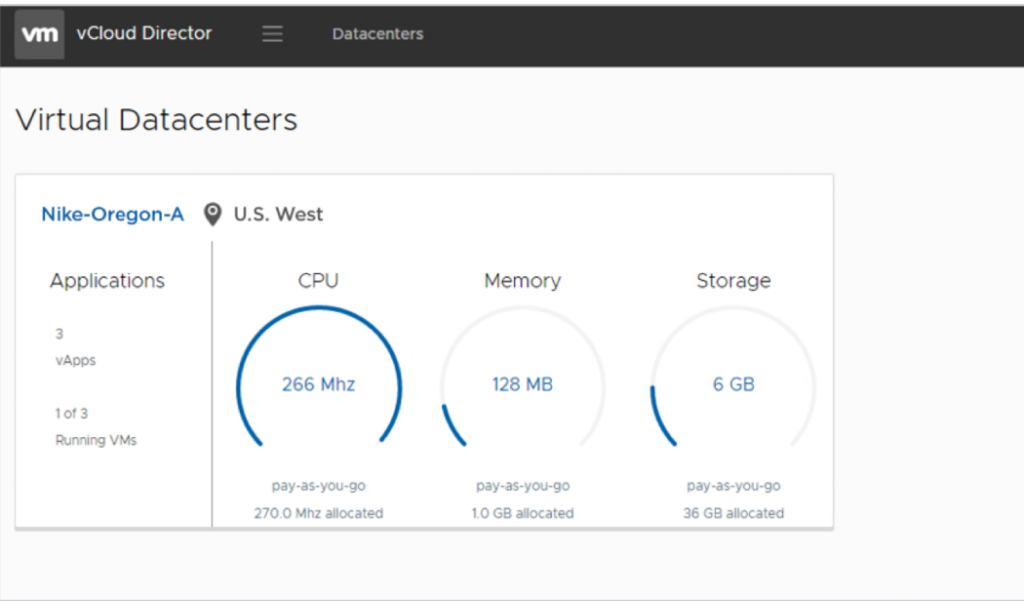Although vCloud Director 9.1 is released less than 6 months after vCloud Director 9.0, it is packed with tons of enhancements and new features. It is hard to believe it is just a minor release. Below is a recap of the top feature of the vCD 9.0 release:
HTML 5 Tenant Portal Enhancement.
While in vCD 9.0 the well received HTML 5 Tenant Portal was introduced, in vCloud Director 9.1 it got enhanced to include enchanced monitoring dashboard, vAPP, and Catalog deployment and management. These enhancemed to the HTML 5 interface has gotten it much closer to parity with the Flex interface and will make it ready for prime time.

HTML5 Administration Portal
VMware vCloud Director 9.1 includes a dedicated HTML 5 provider portal where administrators of the IaaS environment can manage all the system resources and configurations of vCloud Director from an easy to access web portal. The Flex portal will still be available for more advance and indepth configuration while the HTML5 interface get in parity with the Flex interface.
Standalone VMRC & OVF/OVA Upload
Previous verions of vCloud Director has required a web browser plugin called vCloud Director Client Integration Plugin to be installed to Upload OFV/OVA as well to access VMRC. As web browsers started moving away from plugins, vCD 9.1 are offering these capabilities without the requirements of such a plugin in the HTML5 interface.
User Interface Extensibility
VMware vCloud Director 9.1 includes the capability to allow a Cloud Provider to extend the Tenant Portal with third party plugins with a pluggable framework. As an example, this allows a service provider to build into the IaaS offering the ability to create tickets on demand from consumers using the offering. UI extensibility SDK and documentation will be published so that ISVs, cloud providers or system integrators can integrate third party UIs into vCloud Director. In the screen shot below you can see an example how a ticketing system developed in-house by the cloud provider can be incorporated into the single pane of glass with the vCloud Director tenant portal.

Anything as a Service (XaaS)
With the release of vCloud Director 9.1 Service Integration empowers administrators to quickly allow administrators to create workflows using vRealize Orchestrator which can then be easily published within vCloud Director. When workflows are designed the designer can create any parameters that are needed to run the workflow and vCloud Director will natively render these to the service consumer. This can be a simple input box for data input or complex scenarios like presenting a list of virtual machines.

Multi-Site Management View
While vCD 9.0 has introduced the concept of vCD sites and the ability to move between sites using a drop down, VMware vCloud Director 9.1 provides the ability to manage multiple vCloud Director sites through a single aggregate view.

Python SDK and CLI
VMware vCloud Director 9.1 now includes SDK facilitates automation with Python. The vCloud Director Command Line Interface (CLI) allows system administrators and tenants to perform operations from the command line with full support for the Service Provider administrators and the tenant operations from consumers of the IaaS offering. The following URLs can be used to retrieve sample scripts and examples: • Python SDK https://vmware.github.io/pyvcloud/ • vCloud Director CLI https://vmware.github.io/vcd-cli/
SR-IOV (Single-Root input/output Virtualization)
In virtualization, single root input/output virtualization or SR-IOV is a specification that allows the isolation of the PCI Express resources for manageability and performance reasons. With the release of vCloud Director 9.1 any SR-IOV enabled workload is fully supported. The configuration is done per virtual machine from within vCenter itself, but vCloud Director will not affect the workload configuration.
FIPS Mode
vCloud Director 9.1 supports FIPS mode when using NSX 6.3.2 or later, to provide FIPS 140-2 compliant networking functions. vCloud Director 9.1 exposes the FIPS mode of NSX edge service gateways to tenants. Cloud provider has system wide control to provide FIPS mode function. Once that’s enabled per vCD instance, provider administrator can create an edge service gateway with FIPS mode which restricts cypher suites used for IPsec VPN and SSL VPN to those compliant with FIPS.
Deprecated and Discontinued Functionality
End of Life and End of Support Warnings
- Upcoming End of Support for Oracle Database
- vCloud Director 9.1 is the last release of vCloud Director to support Oracle database.
- Upcoming End of Support for vCloud Network Isolation (VCDNI)
- vCloud Director 9.1 is the last release of vCloud Director to support vCloud Network Isolation (VCDNI).
- End of Support for Older vCloud API Versions
- vCloud Director 9.1 no longer supports vCloud API versions 1.5 and 5.1. These API versions were deprecated in a previous release.
- vCloud Director 9.1 is the last release of vCloud Director to support any vCloud API versions earlier than 20.0. Those API versions are deprecated in this release and will not be supported in future releases.
For full release notes of vCloud Director 9.1, you can check: https://blogs.vmware.com/vcloud/files/2018/03/vcd91newfeatureswp.pdf
2 responses to “vCD 9.1 Just Went GA with Great New Features”
I still fail to see why VMware is trying to make a comeback of vCD when vRA is way more adaptable and since 7.x actually usable. And I’m the guy that wrote the book on vCD… well…
Hi Daniel,
Thanks for your comment. It is not either/or strategy to be honest. vRA do very well for Enterprises, but vCloud Director today is the product for service providers. It offer a superior multi-tenancy and capabilities that is better suited toward service providers. I would highly recommend that you take a look at vCD 9.1 and you will find out how the product has evolved to be a superior CMP for Service Providers/Public Cloud.
Regards,
Eiad